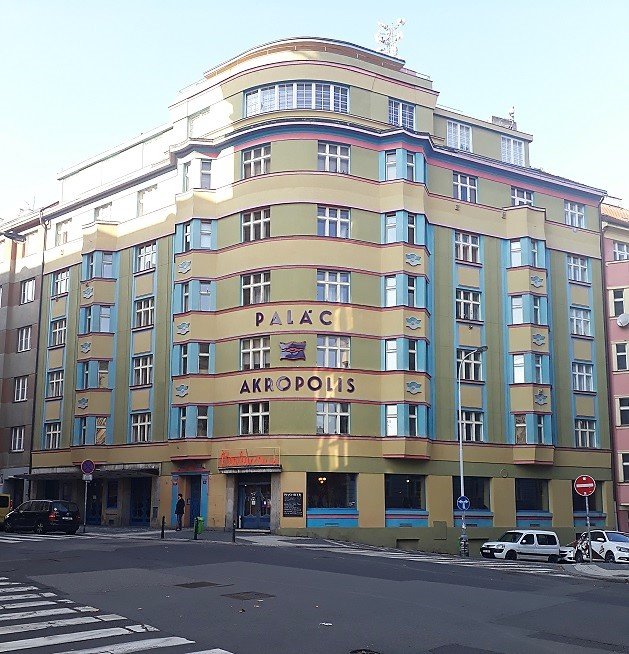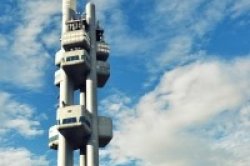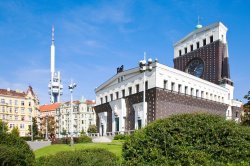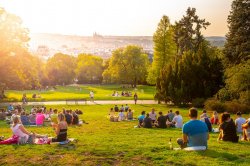Akropolis Palace
The Akropolis Palace is a multifunctional centre with a café, restaurant and a large hall where various cultural events are held. The construction of the building was begun by architect and builder Rudolf V. Svoboda at the border between the Žižkov district and the Royal Vinohrady district in March 1927. Artist František Skála inserted the symbol of a pulsating eye between the words Palác and Akropolis on its front façade. He also decorated the interior of the restaurant, designing it as a fish tank with a lot of bizarre decorations such as coconut shell lamps and an upside-down canoe hanging above the tables in the lounge. There is also a theatre bar with a wide selection of both alcoholic and non-alcoholic beverages, where parties are regularly held with the participation of Czech DJs. The large hall of the Akropolis Palace has a capacity of 700 people.
Useful information for visitors
Public transport connections
Lipanská tram stop
Jiřího z Poděbrad tram stop, metro station (green line)
Opening hours and admission
The Akropolis Palace can be visited during a concert and other events. For information about the programme and tickets, visit the official website.
You can also visit the local restaurant, café or the theatre bar. For more information, click here.
Interesting facts about Akropolis Palace
The Akropolis Palace was not only used for cultural events, but it also included apartments for the upper middle class shortly after its completion. However, shortly before the great economic crisis, the owner had to sell the building to a cremation company due to his debts. In the next few years, the hall was converted for theatre purposes. Popular Czech actor Karel Želenský was among those who tried to create a metropolitan theatre there. However, he failed, as the building was located too far from the city centre. After February 1948, the theatre was closed and was used as a warehouse and a canteen. An extensive reconstruction was carried out after the Velvet Revolution.




